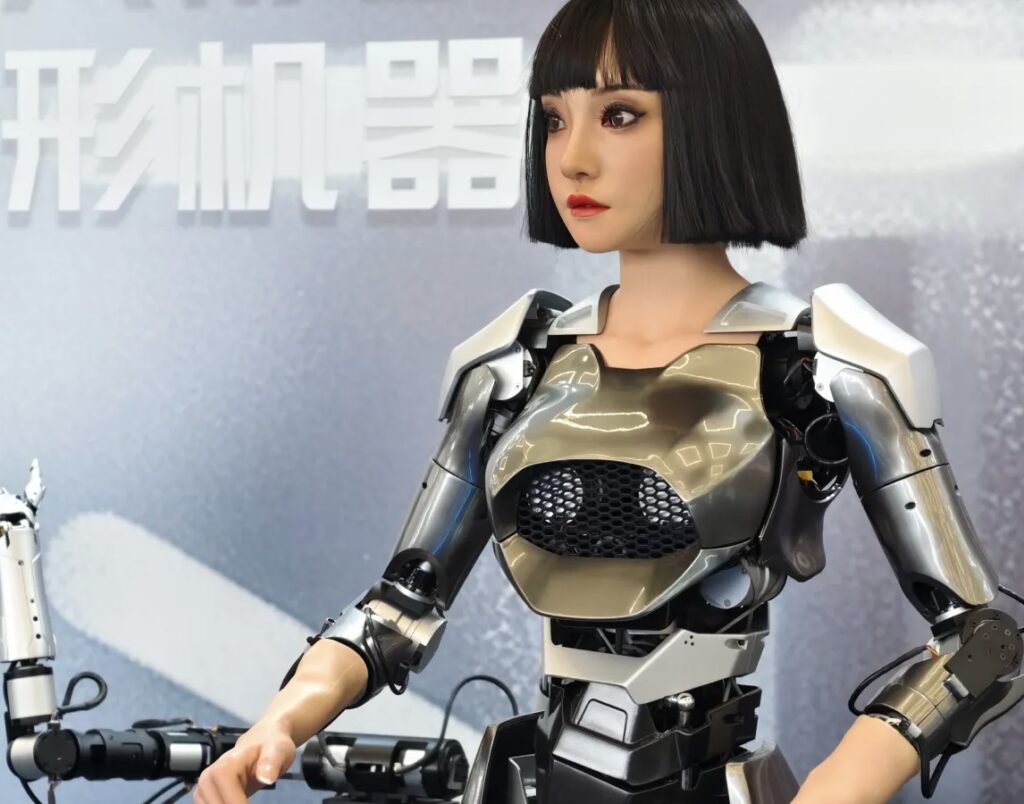The year 2024 will be remembered as a pivotal moment for robotics. Large language models (LLMs) and breakthroughs in engineering have propelled robots to new heights of versatility and capability. Tasks once thought to be decades away are now being executed by machines with precision, intelligence, and adaptability. From autonomous navigation to creative problem-solving, robots are redefining what’s possible in sectors like manufacturing, healthcare, service, and exploration. Let’s take a closer look at how this year has been transformative for robotics.
The Role of Large Language Models in Robotics
Large language models like OpenAI’s GPT and others have played a critical role in advancing robotics. Traditionally, robots relied on pre-programmed instructions or simple decision-making algorithms. The integration of LLMs has changed this paradigm. With natural language processing (NLP) capabilities, robots can now interpret and respond to complex human commands, adapt to dynamic environments, and learn from contextual cues.
For instance, robots equipped with LLMs can:
•Understand Intent: Instead of executing rigid commands like “pick up the red object,” robots can now interpret more complex directives like “organize these items by size and color.”
•Learn from Conversations: Robots can use human-like dialogue to clarify instructions, troubleshoot issues, or even suggest optimized workflows.
•Enhance Accessibility: Language capabilities make robots more accessible to non-technical users, enabling anyone to interact with them naturally and intuitively.
These advancements have unlocked applications across various domains, transforming how robots are deployed and how they interact with humans.
Engineering Breakthroughs: From Dexterity to Mobility
Beyond language capabilities, engineering advancements have made robots more maneuverable, precise, and durable. These improvements have widened the scope of tasks robots can perform, including those requiring fine motor skills, resilience in harsh environments, and adaptive mobility.
Dexterity and Precision
•Robotic Hands: New-generation robotic hands can perform delicate tasks, such as threading a needle or playing a musical instrument. These systems leverage advanced sensors, actuators, and machine learning algorithms to replicate human-like dexterity.
•Surgical Robots: Robotic systems like Da Vinci Surgical System have become even more precise, enabling minimally invasive surgeries with higher success rates and faster recovery times.
•Manufacturing Automation: Robots equipped with advanced grippers and AI can assemble intricate components, detect defects, and adapt to custom workflows.
Mobility and Navigation
•Legged Robots: Boston Dynamics’ Spot and similar robots have become more agile, capable of traversing uneven terrain, climbing stairs, and even performing acrobatics. These improvements are crucial for applications in disaster response and construction.
•Aerial Robotics: Drones have advanced significantly, now able to navigate complex urban environments, carry heavier payloads, and execute detailed inspections of infrastructure like bridges and pipelines.
•Underwater Robots: Autonomous underwater vehicles (AUVs) have gained enhanced maneuverability and sensors, enabling them to explore ocean depths, monitor marine life, and inspect undersea cables.
Robots in Previously Unachievable Tasks
One of the most exciting aspects of 2024 has been robots’ ability to accomplish tasks previously deemed impossible in the near term. These breakthroughs span multiple industries and address long-standing challenges.
Healthcare
Robots are now performing tasks that were once thought to require human intuition and expertise. For instance:
•Caregiver Robots: Robots equipped with LLMs and advanced sensors are providing companionship and assistance to the elderly, including helping with mobility, medication management, and even emotional support.
•Diagnosis and Treatment: AI-powered robots can now analyze medical images, detect anomalies, and recommend treatment plans with remarkable accuracy, complementing the work of doctors.
Agriculture
Agricultural robots are revolutionizing farming practices:
•Autonomous Harvesting: Robots can now identify and pick ripe fruits without damaging them, significantly improving efficiency and reducing waste.
•Precision Farming: Using AI and drones, robots can monitor crop health, optimize irrigation, and apply fertilizers and pesticides in targeted areas.
Space Exploration
Robots are playing a central role in humanity’s quest to explore space:
•Lunar and Martian Missions: Autonomous rovers equipped with AI can navigate extraterrestrial terrains, collect samples, and perform experiments without human intervention.
•Satellite Maintenance: Robots are being deployed to repair satellites and extend their lifespans, reducing the cost and frequency of launching replacements.
Urban Environments
Robots are becoming indispensable in cities:
•Delivery Bots: Autonomous robots are delivering groceries, packages, and meals in urban areas, offering contactless convenience to consumers.
•Cleaning and Maintenance: Robots are cleaning skyscraper windows, maintaining parks, and even detecting infrastructure issues like cracks in bridges or roads.
Ethical and Social Implications
The rapid rise of robotics has sparked important conversations about ethics, job displacement, and societal impact. While robots offer numerous benefits, they also present challenges that need to be addressed.
Job Displacement:
The automation of complex tasks raises concerns about job security in industries like manufacturing, agriculture, and logistics. Policymakers and companies must invest in reskilling programs to help workers transition to new roles.
Bias and Accountability:
Robots powered by AI and LLMs can unintentionally reflect biases present in their training data. Ensuring fairness and accountability in decision-making algorithms is crucial.
Privacy and Security:
Robots often rely on data collection to function effectively. Safeguarding user privacy and preventing misuse of data are critical challenges.
Ethical Autonomy:
As robots gain autonomy, ethical dilemmas arise. For example, how should a robot prioritize tasks in life-or-death situations, such as in disaster response or healthcare?
Future Trends in Robotics
The advancements of 2024 set the stage for even more groundbreaking developments in the coming years. Here are some key trends to watch:
•Human-Robot Collaboration: Robots will increasingly work alongside humans in industries like manufacturing, healthcare, and education, augmenting rather than replacing human capabilities.
•Personalized Robotics: The integration of AI will allow robots to adapt to individual user preferences and needs, making them more effective in homes and workplaces.
•Swarm Robotics: Inspired by nature, swarms of small, coordinated robots will tackle large-scale challenges, such as search-and-rescue missions or environmental cleanup.
•Robotics as a Service (RaaS): Businesses and consumers will increasingly adopt subscription-based robotic solutions, reducing upfront costs and expanding access to advanced technology.
•Continued Integration of LLMs: As language models become more sophisticated, their integration with robotics will lead to even more intuitive and versatile systems.
Final Thoughts
The advancements in robotics in 2024 have fundamentally reshaped the possibilities for what robots can achieve. From the integration of LLMs enabling nuanced communication to engineering breakthroughs enhancing mobility and precision, robots are now tackling tasks once considered impossible. Whether improving healthcare, revolutionizing agriculture, or exploring space, these machines are becoming indispensable tools for addressing some of humanity’s greatest challenges.
While the future of robotics holds immense promise, it also demands thoughtful consideration of ethical, social, and economic implications. As we look ahead, the goal should be to harness the power of robotics to complement human efforts, enhance productivity, and create a more equitable and sustainable world. The robots of 2024 aren’t just tools—they’re collaborators in shaping the future.
No comments yet.








